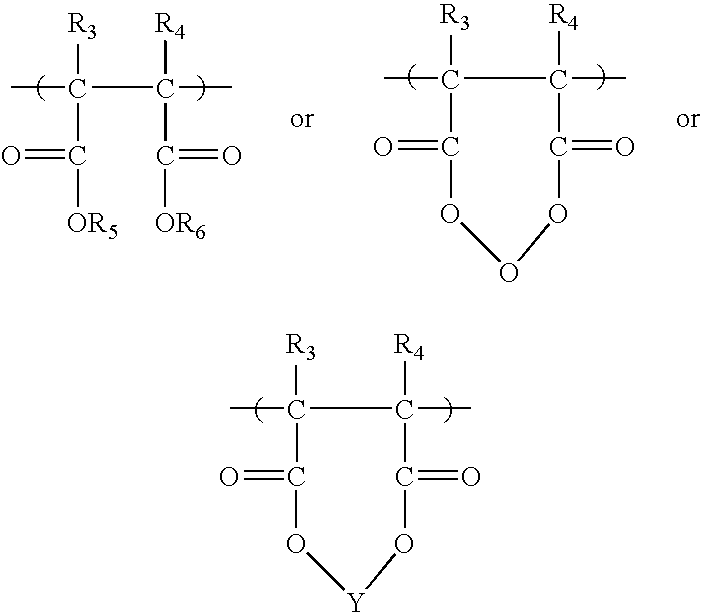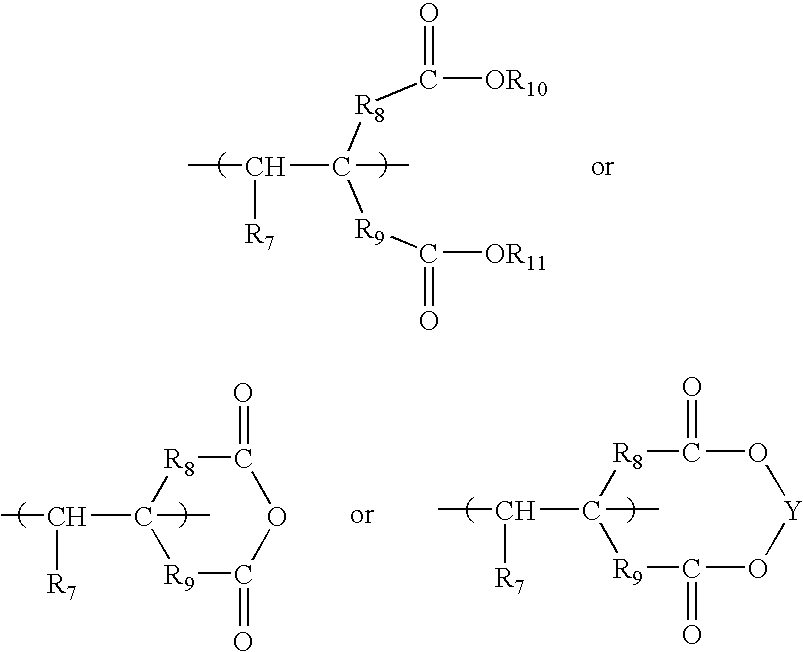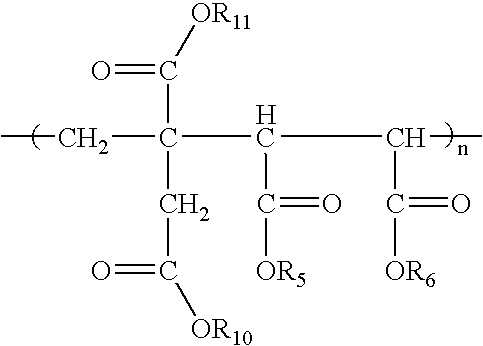Anionic polymers composed of dicarboxylic acids and uses thereof
a technology of dicarboxylic acid and anionic polymers, which is applied in the field of anionic polymers composed of dicarboxylic acids, can solve the problems of significant limitation of use, inability to biodegrade, and reducing utility, and achieve the effect of improving corn growth
- Summary
- Abstract
- Description
- Claims
- Application Information
AI Technical Summary
Benefits of technology
Problems solved by technology
Method used
Image
Examples
example 2
This reaction was carried out in equipment similar to that used in Example 1 above. The following procedure was followed:847 g purified water was placed into the reactor. Next, 172 g itaconic acid and 130 g maleic anhydride were added with vigorous stirring. This mixture was heated to about 85-90A.degree. C., at which temperature this mixture exists as a clear solution. When the mixture reached the desired temperature, 15 g of potassium persulfate was added to the solution. The reaction mixture was allowed to stir for 3 hours, and a second portion of persulfate, equal to the first, was added, and allowed to react for a further 3 hours. Product was isolated in the same manner as described for Example 1. A schematic representation of this reaction is shown below ##STR7##
example 3
The procedure of Example 2 was followed, but the product was not isolated. Instead, it was diluted with water to give a 10% w / w solution. Then, 6.62 g ZnO was added to 200 g of this solution. The oxide dissolved in the liquid with stirring. This solution was then dried to a white highly water-soluble powder.
example 4
The procedure of Example 2 was followed, but the product was not isolated. Instead, it was diluted with water to give a 30% w / w solution. 6.66 g CuO was then added to 260 g of this solution. The oxide dissolved in the liquid with stirring and heating to about 60 degrees C. This solution was then dried to a green-colored highly water-soluble powder.
PUM
 Login to View More
Login to View More Abstract
Description
Claims
Application Information
 Login to View More
Login to View More - R&D
- Intellectual Property
- Life Sciences
- Materials
- Tech Scout
- Unparalleled Data Quality
- Higher Quality Content
- 60% Fewer Hallucinations
Browse by: Latest US Patents, China's latest patents, Technical Efficacy Thesaurus, Application Domain, Technology Topic, Popular Technical Reports.
© 2025 PatSnap. All rights reserved.Legal|Privacy policy|Modern Slavery Act Transparency Statement|Sitemap|About US| Contact US: help@patsnap.com



